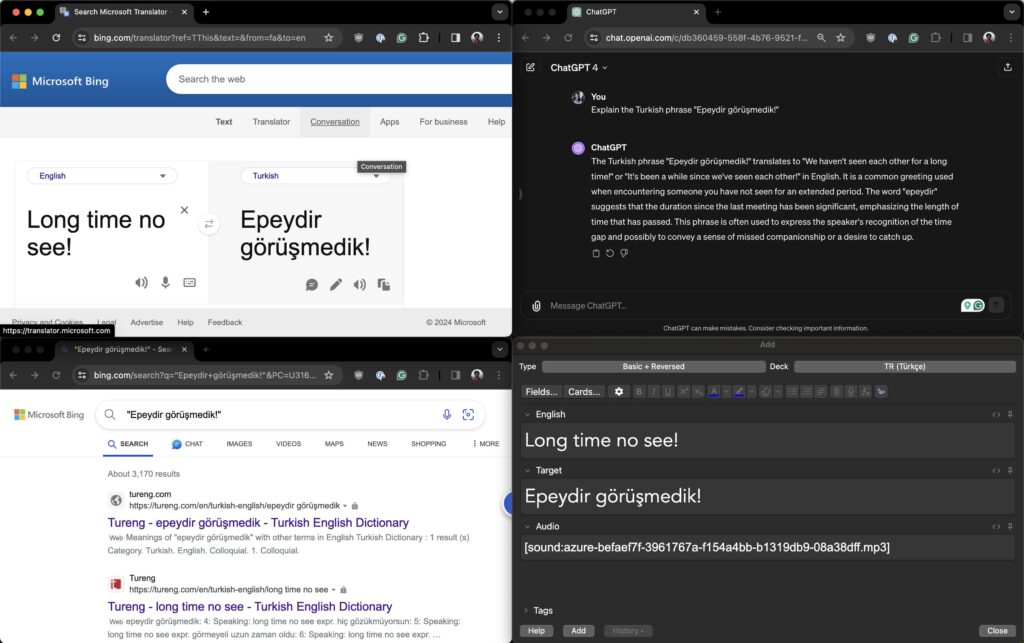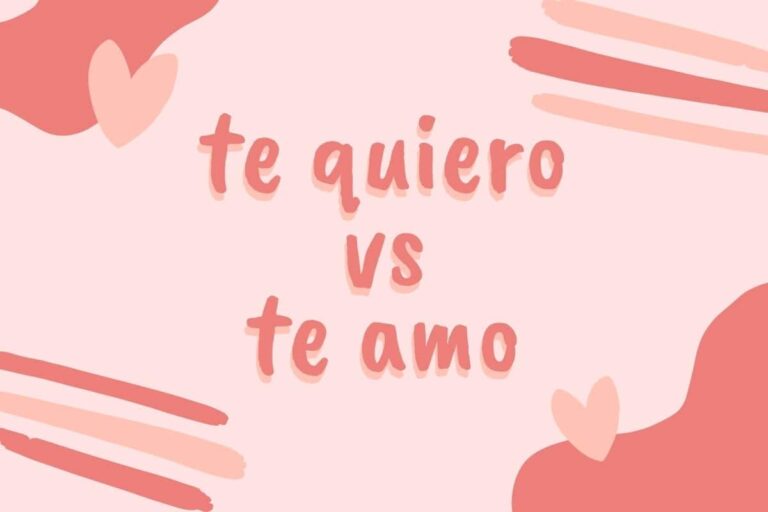Follow Your Curiosity in Language Learning
A lot of people ask me “How do you learn languages?” I’m up to 10 or so so far (give or take — there are always a few rusty, and I don’t even count Swahili anymore, though I got quite far with it).
There are many ways of answering the question of how to learn languages — e.g. “have fun”, “do what you normally do”, or “travel and immerse yourself”. There’s no one right answer. But one of my favourite ones is to suggest to people to follow your natural curiosity.
The best reason to use this curiosity-driven language learning technique is that you can do it for any language, at any level, from anywhere, for free. There’s no minimum or maximum time. You can start doing it right now.
It has also become a lot easier to follow your curiosity since the rise of AI assistants like ChatGPT and Microsoft Copilot. (See my last review of language learning with AI.)
Contents
The Process of Following Your Curiosity in Language Learning
The process of following your curiosity is basically to allow yourself to follow this path:
- “I wonder how you say ‘I want to eat orange’ in Italian?” you wonder as you peel an orange.
- Look it up in Google Translate (or ChatGPT, Microsoft or DeepL or whatever you use), and see it’s generally something like ‘Voglio mangiare un’arancia’
- Think “Is that really the sentence?” and search for it in Google and Google Images. Yep, seems about right! (Or maybe there’s a modification to make.)
- “But what does it mean? What does ‘voglio‘ mean?”. Ask ChatGPT or another AI assistant like Microsoft Copilot to explain it.
- If you think it’s an important sentence to remember, add it to your flashcard deck.

You can then let your imagination continue to wander. You might think things like
- Why is the sentence in this order?
- Which verbs are conjugated?
- What are some other example sentences including this word?
All of these are questions you can ask your AI assistant.

Of course, you can do the whole thing using an AI assistant, if you want. I just like to mix up tools to make sure I’m not being fed incorrect information by AI, which can be very confidently incorrect.
How to Use This Technique in Language Learning
There’s no one language learning technique that’s the be-all and end-all. No app, no game, no rule. So, like all techniques, I’d say you should use this one only as much as it seems interesting.
Generally speaking, I use this technique when I’m studying in the morning (my chosen time of study) and realise it has been bugging me that I don’t know how to say something.
I might have encountered a situation when I wanted to say something, or I might hypothesise about a situation that may happen, e.g. ordering food in a restaurant.
I’ll rarely add more than about 5-10 flashcards a day, and I make a habig of deleting old or less useful ones, anyway. (Deleting flashcards is one of my hacks to make flashcards less painful.)
One of the main tools in this technique that I’d recommend is flashcard software like Anki. Use Anki, make double-sided (or four-sided, focusing on comprehension) flashcards, add audio for the target sentence, and get studying.
Caveats
This process works for common languages, though modern AI does seem to run out of puff with less well-spoken but still large languages, like Egyptian Arabic for example (which has an informal written form, but which is mostly a verbal language).
There’s always a benefit in having a human confirm the most common way of saying things. Even online forums can’t be trusted all the time — you often don’t know the background of the person answering the question.
Also, there are always variations of saying common things that depend on region, your age/gender (or the age/gender of the person you’re speaking with), and so on. True fluency comes only with interaction with the people with whom you want to be interacting.






